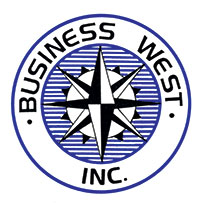By Murrel Bland
It was 50 years ago on June 20, 1968, when The Wyandotte West was born. It was produced in a basement of a town house condominium in the Redwood Gardens subdivision at 816 N. 70th St.
I was barely 27 years old. My staff was my business partner, Jack Root, a friend from the Air Force Reserve and the local Jaycee Chapter, and my wife Carol, a teacher who had spent three years instructing third graders at Claude Huyck Elementary School.
Despite considerable preliminary work in planning and creating the first issue, it was an all-night effort to produce Volume 1, Number 1. We finished up at about 7 a.m. I took the eight-page product to a printing plant in the Fairfax Industrial District; Bailey Publications had its offset press in a building that had housed Deluxe Checking Printing. Later, this building became a laboratory for the Environmental Protection Agency.
The Wyandotte West was born out of a need for a voice that would represent the emerging suburban community west of 38th Street, basically the area that was the former Washington School District. The area had a population of about 35,000 with about 10,000 homes. (Today that area has a population of about 60,000 persons with about 21,000 homes.) There was also a need for an advertising medium. Ad revenue would pay the bills.
I had a gut feeling that neither The Kansas City Kansan nor The Kansas City Star were really serving the area. After publishing a few issues, I realized that I was correct; The Kansan was particularly weak. Advertisers consistently complained that ads in The Kansan failed to get results.
I had worked a little more than four years at The Kansas City Star. I well remember that Saturday morning, June 1, 1968, when I told my boss, Ayers Blocher Jr., that I was leaving. It was the hardest thing I had ever done to tell him that I was giving up a secure job to go into something that I didn’t even know would succeed. Blocher reminded me of all the benefits that I had received—consistent annual raises, choice of assignments and opportunities to make additional money in selling photos to national magazines such as Time and Newsweek. And of course, there was the increase of about $10 a month in car allowance.
A few years later, Blocher and I were on a U.S. Navy junket for reporters who traveled to Orlando, Fla., to watch a group of seaman from the Kansas City Area graduate from basic training. He said that if he had had his life to do over, he would do what I did. That was a pretty high compliment.
This period 50 years ago was a troubled time in this country. Martin Luther King Jr., the noted civil rights advocate, was slain on April 4. Civil disorders followed including those over town. Fortunately, the Kansas National Guard and law enforcement officers stopped the destruction from spreading to Kansas City, Kansas. Then Bobby Kennedy, who was campaigning for president in Los Angles, was assassinated on June 5.
Locally, high school and college students were protesting the United States’ involvement in Vietnam. Later the public would discover that as far back as the Truman Administration, the American people were misled about U.S. involvement in this Southeast Asian country.
There was considerable talk in the late 1960s and early 1970s about the proposed I-435 highway that would provide development opportunities for Western Wyandotte County, particularly the Piper community. Would the roadway be built on the east or west side of Wyandotte County Lake? Meantime, construction had started on I-635—a project first proposed in the 1950s.
What I didn’t realize in 1968 was how much the demographics were changing. Although my trade territory was increasing in population, the other parts of Wyandotte County were suffering severe outmigration. From 1970 until 2000, more than 60,000 persons left Wyandotte County, mostly those in the middle class. During the same period, some 30,000 moved here with many of them settling in Western Wyandotte County. That meant a net loss of 30,000. The good news is that population is back on the plus side with about 160,000 for all of Wyandotte County.
The newspaper business is changing, thanks to the internet. The Kansan, the zone section of The Star and the print editions of The Wyandotte West and The Piper Press are gone. Two of the biggest costs in the newspaper business are printing and distribution. But the need to be informed is still there. Mary Rupert, who cut her teeth in the business by setting type in the 1970s for The West, is now the editor of the online wyandottedaily.com.
I recall receiving a very high compliment about The Wyandotte West. It was either in the late 1960s or the early 1970s when I was covering a candidates’ forum in the basement community room of what is now Bank Midwest at 7804 State Ave. Marge Bruce was in charge of the meeting. Someone had asked who I was. I replied I was from The Wyandotte West.
“What is Wyandotte West?” the person from out of the area asked.
Before I could respond, Bruce quickly said, “That’s our newspaper.”
At first, my selfish instincts took over. After all, I was the that had risked everything I had to start this venture. Then I realized what a wonderful tribute it was that she accepted the newspaper as part of the community.
Murrel Bland is the former editor of The Wyandotte West and The Piper Press. He is the executive director of Business West.
